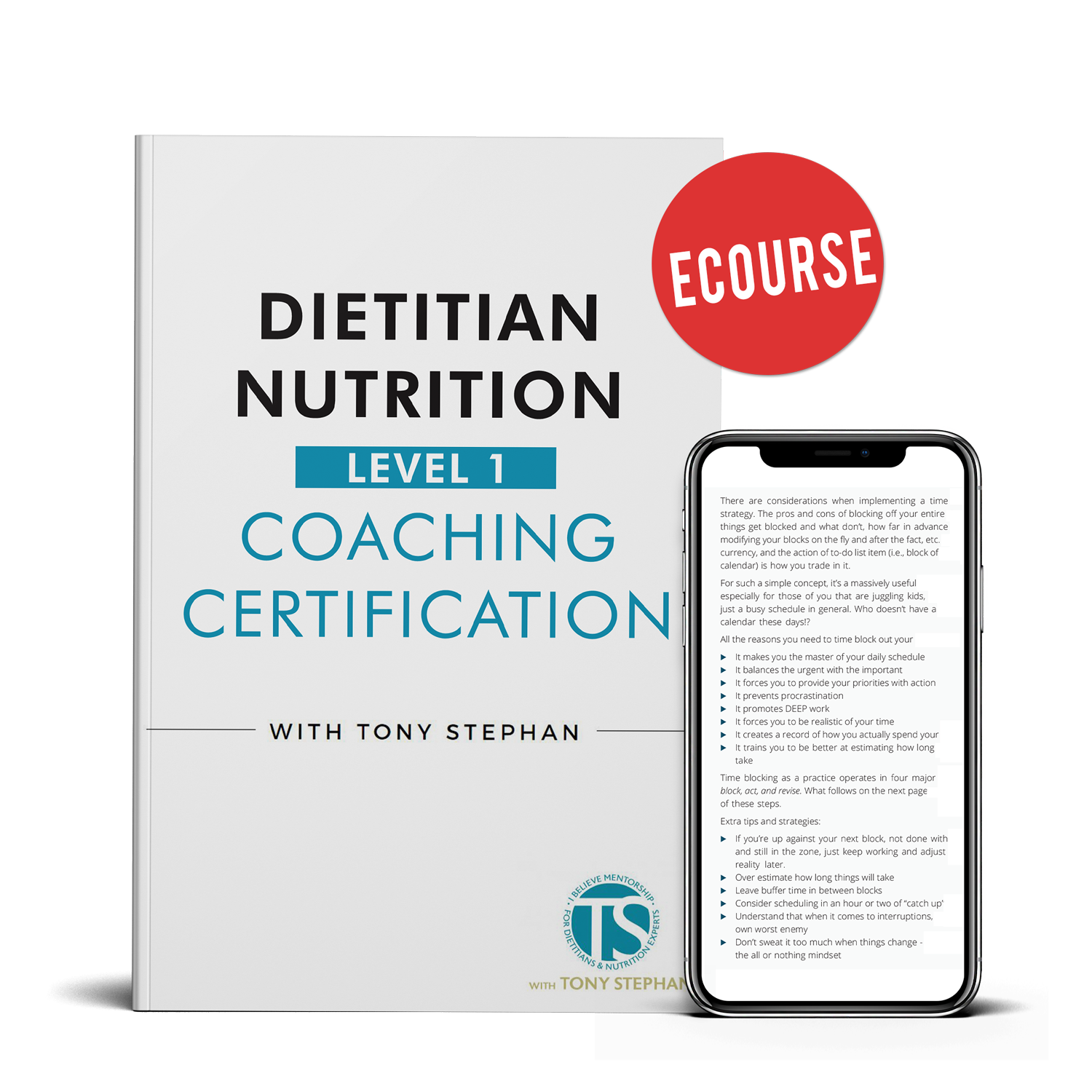As a registered dietitian nutrition coach you need to be ready to answer any “fad diet” question that is thrown your way. Many of us work with clients who have spent months, if not years, dieting, and we need to be able to understand the diet they have been on in order to better help them. Due to this, I’ve chosen 5 of the top fad diets that you will most likely hear about in 2020 and have explained them below.
#1 The Ketogenic Diet
Ah yes, keto. We have all heard of this one. The keto diet was HUGE in 2019, and it really does not show any signs of stopping or slowing down in 2020. Essentially, this diet is low carb and very high fat. Protein is consumed as well, and there is no discrimination between lean protein sources and protein sources full of saturated fats.
I’m sure we all learned in our medical nutrition therapy class in college that the keto diet has been used for quite some time to reduce epileptic seizures in children, however, recently it has been a “wonder diet” for weight loss. Unfortunately, there are only short-term studies focusing on this diet, so it is unclear whether this diet is safe long-term.
So how does this diet work? Ultimately, this very high fat and low carb diet forces your body to use ketones as fuel rather than glucose, which comes from carbohydrate-rich foods such as grains, vegetables, and legumes. The liver produces ketones from stored fat, which sounds all fine and dandy, however, in order for ketones to be produced, the body needs to be deprived of its main fuel source, glucose. To do this, only 20 to 50 grams of carbohydrates can be consumed per day. If an individual sticks to this small amount of carbs daily they will reach ketosis within a few days.
What are the risks? There are quite a few risks to keep in mind when it comes to the ketogenic diet. Firstly, this diet can be very high in saturated fat, which we know is linked to heart disease. Second, there may be nutrient deficiencies due to the lack of fruits, vegetables, grains, etc., in the diet. Third, liver problems. Because the keto diet is very high fat, the liver will be spending a lot more time metabolizing that fat, this could potentially make any existing liver condition worse. Other risks include constipation due to low fiber content, kidney problems, and mood swings.
#2 Whole30
Whole 30 is another popular diet that has been around for the past decade or so. According to the Whole 30 website, you need to follow the program rules, and there are quite a few, for 30 days in order to see “life-changing results.” The program states that you should eat real food that has 0 ingredients or a very small list of recognizable ingredients.
What are the program rules? You can NOT consume any added sugar, this includes real and artificial, so no honey, maple syrup, stevia, etc. You can NOT consume any alcohol, NO grains, NO legumes, NO dairy, NO carrageenan, MSG, or sulfites. NO baked goods or “junk foods,” and NO weighing yourself or taking body measurements until after the 30-day program has been completed.
You CAN consume ghee or clarified butter, fruit juice, some legumes such as “green beans, sugar snap peas, and snow peas,” vinegar, coconut aminos, and salt.
I will say that there are some “rules” to this diet that are good, for instance, aiming to eat more whole foods is great and something that everyone should try and do. However, there are so many restrictions on food items that are perfectly okay, such as legumes and grains. And no sugar or alcohol? I don’t know about you, but a glass of wine a few nights per week and some chocolate or a cookie is something I will not ever give up, and your clients should not feel like they need to give these things up either!
#3: Intermittent Fasting
Intermittent Fasting or (IF) is probably one of the most popular trends in the fitness industry right now, and quite a lot of people have found great success with it. I wasn’t sure whether to include IF because it isn’t exactly a diet, it’s more of an “eating pattern,” however, I thought it was important to include in this list due to its popularity.
What is it? IF does not have any specific food rules like the ketogenic diet or Whole30 have, it focuses more on timing rather than the food. There are multiple methods to IF, but the most often used is usually the 16/8 method where an individual fasts for 16 hours and consumes their calories in an 8-hour window. There is also the “eat-stop-eat” method which involves fasting for a full 24 hours 1 to 2 times per week.
How does it work? A person using the 16/8 method will most likely be skipping breakfast and only eating lunch and dinner, so they are not consuming as many calories as they would be if they were not fasting. With that being said, IF ultimately reduces your calorie intake, leading to weight loss. Unless of course, you compensate by consuming the calories from the meal you fasted through.
#4 Paleo
Paleo, or the paleolithic diet, is another one of those diets that have been around for quite a few years and will still be prevalent in 2020. The major aim of this diet is to consume food that might have been eaten by early humans in the Paleolithic era.
What can you eat? Typically, individuals on this diet can eat lean meats, fruits, vegetables, fish, nuts, and seeds. However, foods such as dairy, legumes, and grains are off-limits due to the fact that these food items were not consumed in the paleolithic era. It’s important to note that refined sugar, salt, potatoes, and processed foods, in general, are off-limits with this diet as well.
What’s the purpose of this diet? As mentioned above, the main purpose of this diet is to return to eating as the “early humans” ate in the Paleolithic era, and this is due to the idea that the human body is not genetically appropriate for the modern diet we eat on today’s society. Individuals who follow this diet usually believe that the modern way of eating has contributed to some of the major health issues we see today, such as obesity, heart disease, and diabetes.
#5 Weight Watchers (WW)
I’m sure you are all familiar with Weight Watchers, now known as WW. With WW no food is off limit, which is a huge plus for a lot of people who are looking to lose weight while still eating their favorite foods.
How does it work? This program uses “SmartPoints” which assigns foods a specific number of points based on that item’s saturated fat content, calories, protein, and more. This point system is used to try and help individuals choose “healthier” foods, which are usually fewer points than something “unhealthy” such as a donut or scoop of ice cream. When a person joins WW, they are given a personal amount of “SmartPoints” they can use daily in order to reach their goal weight. As long as they stay within their “SmartPoint” budget, they are on the track to success. WW has an app that allows users to track what they eat, view their “SmartPoint” budget, and connect with other WW users.
Are you a Registered Dietitian looking to take your online business to the next level? For more information about the I Believe Mastermind for Dietitians visit https://ibelievementorship.com.




